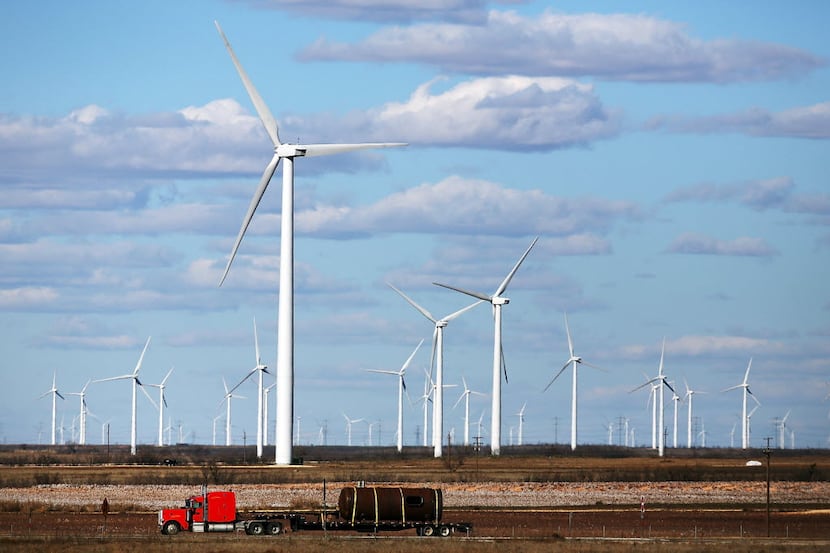The wind energy industry has long had some lawmakers gunning for it. The latest rear-guard action is a disingenuous effort to portray the industry as a threat to military preparedness.
State Sen. Donna Campbell, R-New Braunfels, and Rep. James Frank, R-Wichita Falls, have emerged as the faces of wind-energy opposition using the proximity of wind projects to military bases as a pretext to take away all-important tax incentives for clean energy. They've introduced companion bills, SB 277 and HB 445, to deny tax incentives to developers of new wind turbines within 30 miles of a military airfield.
And in Washington, Sen. John Cornyn, R-Texas, and U.S. Rep. Blake Farenthold, R-Corpus Christi, are backing federal bills that would impose similar restrictions nationwide.
Yes, poorly located turbines can interfere with low-level military flight training exercises and hinder the detection of small planes on radar systems. But there is already a national process for wind farm developers, local communities and military installations to review pending wind farms. If a base commander has concerns that can't be resolved, those wind projects won't be built.
In addition, ERCOT, the state's electric grid operator, requires developers in Texas to contact the military very early in the development process in order to resolve potential conflicts smoothly, thanks to Gov. Greg Abbott.
Nor is the military asking for this solution. In fact, a Department of Defense Clearinghouse report in 2015 concluded that "it is not possible to apply a 'one-size-fits-all' standoff distance between DOD military readiness activities and development projects." That's a polite way of saying that a proposal like a 30-mile buffer zone — roughly the distance between Grand Prairie and Plano — is a lousy idea.
Not even Campbell, the state senator, is being entirely straight on her motivation for the bill. When questioned during a committee hearing in Austin this month, she said her bill would still allow wind developers to locate within the buffer zone but that those developers would not be eligible for tax benefits to make their projects more economically feasible.
Then she conceded that she's "not a subsidies person" and would take away all wind energy subsidies if she had her way. Aha.
Right now, about 39 percent of Texas' wind energy capacity is generated within those 30-mile buffer zones that these bills would declare off-limits to new construction. Where are the reports of problems?
In California, about 890 wind turbines operate within 12 miles of Travis Air Force Base without incident. Some military bases even have wind-generating capacity on site. That's even more evidence that a 30-mile buffer zone amounts to a massive overreach under a dubious premise.
Lawmakers should listen to military experts and the Republican Abbott, both of whom have encouraged negotiations over this ham-fisted legislation. In, Texas, which leads the nation in wind production, landowners could lose royalties and rural school districts could lose taxes if these bills were to become law. The state also would lose some of the clean energy benefits of an alternative to carbon-dioxide-emitting fossil fuels.
Not every problem requires a new law. Military preparedness and wind energy can co-exist if lawmakers just back off.
Tilting at windmills
"Due to the wide variety of missions and the variability of impacts on different types of obstructions, it is not possible to apply a 'one-size-fits-all' standoff distance between DOD military readiness activities and development projects."
—The DOD Clearinghouse in a March 2015 report to CongressWhat you can do
Contact your state legislator to register your opposition to SB 277 and HB 445, which would create an unnecessary 30-mile buffer zone around military airbases. To find out who represents you and how to contact them, go to www.fyi.legis.state.tx.us/Home.aspx and type in your address.
Email forms are available on each lawmaker's website. Find them at www.house.state.tx.us/members and www.senate.state.tx.us/directory.php.

